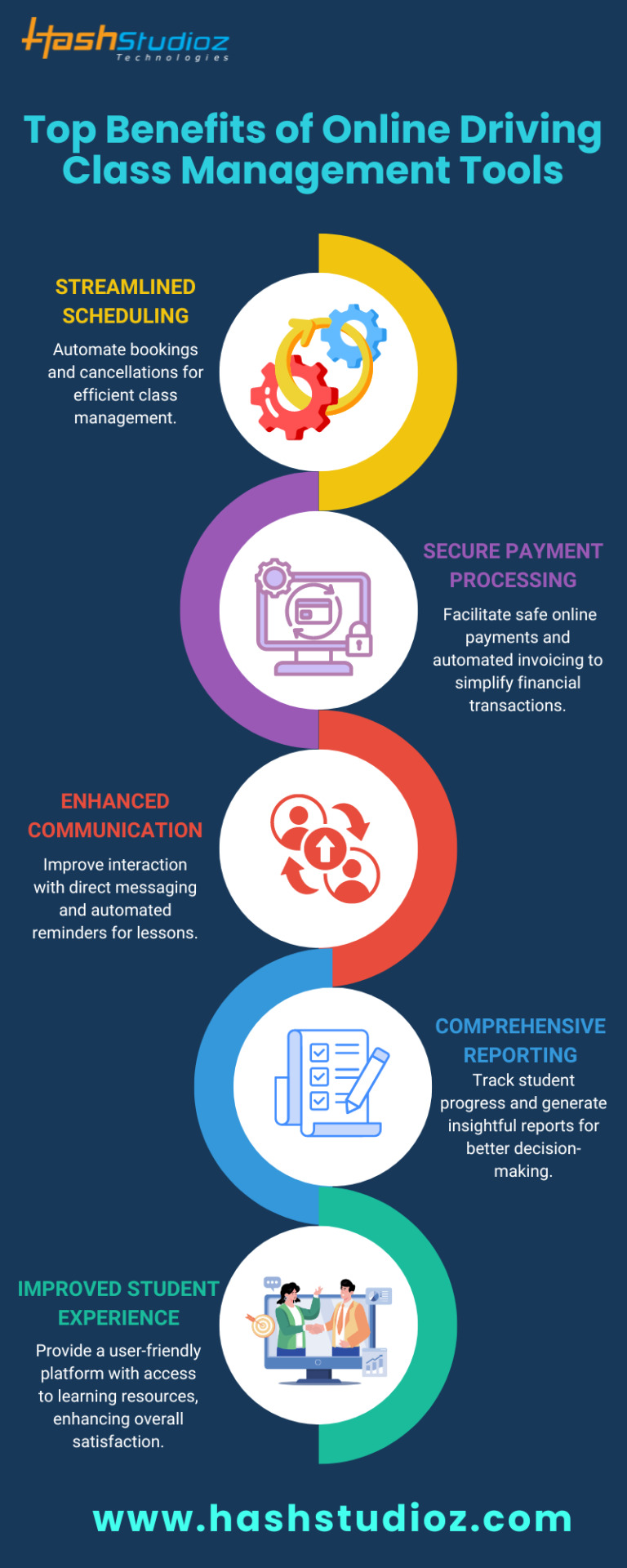#Managementtool
Explore tagged Tumblr posts
Text
📋 Basic Management Gantt Chart – Excel Template
Managing projects doesn’t need to be complicated. The Basic Management Gantt Chart Template helps you map out tasks, allocate resources, and monitor progress—all in Excel.
📌 What’s Inside: ✅ Editable Gantt layout for phases & timelines ✅ Columns for task owner, status, and deadlines ✅ Visual bars auto-adjust based on dates ✅ Lightweight and easy to use—no learning curve!
This template is built for clarity and control, whether you're overseeing a marketing plan, operations rollout, or a team project.
💼 Great for: ✔️ Managers & team leads ✔️ Project coordinators ✔️ Small business owners ✔️ Departmental planning
💡 Pro Tip: Use it weekly to update stakeholders with visual progress snapshots.
🟩 Keep your projects on track → 🔗 excelguru.io/templates/gantt-chart/basic-management-gantt-chart
#exceltemplate#ganttchart#managementtool#projectplanning#taskmanagement#timelinetemplate#excelguru#freeexceltemplate#teamplanning#productivitytools
0 notes
Text
Mastering Data Privacy: How Privacy Management Software Ensures Compliance

In an era where data is both an asset and a liability, managing privacy is no longer optional—it's a business imperative. With the increasing volume of personal data being collected, stored, and processed by organizations, the demand for effective Privacy Management Software has surged. This software serves as the foundation for ensuring compliance with data protection regulations, minimizing risks, and maintaining customer trust.
What is Privacy Management Software?
Privacy Management Software is a suite of tools designed to help organizations manage data privacy policies, assess risks, handle data subject requests (DSRs), and comply with data protection laws like the General Data Protection Regulation (GDPR), California Consumer Privacy Act (CCPA), and others.
The software typically includes features for:
Data mapping and inventory
Consent and preference management
Data subject request automation
Privacy impact assessments (PIAs)
Incident and breach management
Audit trails and reporting
These features enable businesses to maintain transparency and accountability in how they handle personal information.
Why Privacy Management Matters
The digital economy thrives on personal data. However, increasing concerns over misuse, data breaches, and non-compliance penalties have placed privacy at the center of business operations. Failing to comply with privacy regulations can result in:
Hefty fines (up to €20 million or 4% of global revenue under GDPR)
Reputational damage
Loss of customer trust
Legal liabilities and business disruptions
Privacy Management Software allows companies to proactively manage compliance rather than reactively respond to incidents. It also signals to customers and partners that privacy is a priority.
Key Benefits of Privacy Management Software
1. Regulatory Compliance
Privacy regulations are complex and constantly evolving. Privacy Management Software helps organizations keep up with legal changes across jurisdictions and adjust their policies and processes accordingly. Built-in templates, checklists, and regulatory databases streamline compliance workflows.
2. Centralized Data Mapping
Understanding where personal data resides, how it flows, and who has access to it is the first step to ensuring privacy. Data mapping tools within the software automatically scan systems to identify data sources and generate visualizations of data flows. This centralization ensures better control and risk mitigation.
3. Automated Data Subject Request Handling
Under laws like GDPR and CCPA, consumers can request access to their data, ask for corrections, or request deletion. Manual handling of these requests is time-consuming and error-prone. Privacy Management Software automates the intake, verification, processing, and tracking of DSRs, ensuring timely and accurate responses.
4. Risk Management and Impact Assessments
The software enables organizations to conduct privacy impact assessments (PIAs) and data protection impact assessments (DPIAs) to identify and mitigate risks before launching new projects or technologies. Some tools even offer AI-powered risk scoring and recommendations.
5. Incident Response and Breach Management
When a data breach occurs, time is critical. Privacy Management Software includes incident response modules that help record, assess, and manage data breaches. It ensures timely notification to regulators and affected individuals, reducing legal and reputational risks.
6. Auditability and Reporting
Documentation and audit trails are crucial for proving compliance. These tools provide dashboards, logs, and customizable reports to satisfy internal audits, regulatory inspections, and board-level reporting.
Industries That Benefit the Most
Privacy Management Software is valuable across all sectors, but it's especially critical for industries that handle large volumes of personal or sensitive data, including:
Healthcare – Ensuring HIPAA compliance and safeguarding patient data
Finance – Protecting financial information and meeting GLBA and SOX requirements
Retail and eCommerce – Managing consumer data and preferences
Technology – Handling user data across platforms and devices
Education – Securing student and faculty data in compliance with FERPA
Choosing the Right Privacy Management Software
When selecting a privacy solution, organizations should consider:
Scalability – Can it grow with your business and handle increasing data complexity?
Integration – Does it seamlessly integrate with your existing IT and security stack?
User Experience – Is it intuitive for both technical and non-technical users?
Customization – Can it be tailored to your specific industry or regulatory requirements?
Vendor Reputation – Does the vendor have proven expertise and support capabilities?
Popular vendors in this space include OneTrust, TrustArc, BigID, Securiti.ai, and Privitar.
The Future of Privacy Management
As artificial intelligence, IoT, and digital transformation continue to evolve, so too will the challenges of data privacy. Privacy Management Software is expected to become more intelligent and proactive—leveraging machine learning, real-time analytics, and automation to offer predictive risk modeling and adaptive compliance.
Regulators are also becoming more sophisticated in enforcement, making robust privacy infrastructure a necessity rather than a luxury. Companies that embed privacy into their core operations not only mitigate risk but also gain a competitive edge in today’s trust-centric economy.
Conclusion
Privacy Management Software is no longer a nice-to-have—it's a mission-critical component of modern data governance. By automating complex compliance tasks, enhancing visibility into data practices, and empowering users with control over their information, these solutions pave the way for responsible and sustainable data management. As privacy regulations expand and consumer expectations rise, investing in robust privacy management tools is one of the smartest moves a forward-thinking business can make.
#managementsoftware#privacysoftware#softwaremanagement#monitoringsoftware#riskmanagementsoftware#managementtools
0 notes
Text
A change log is a document that records all modifications made to a project, software, or document over time. It serves as a historical record of changes, helping teams track updates, identify improvements, and maintain transparency. Whether used in project management change logs, software development, or corporate workflows, an effective change log ensures clarity and accountability.
In this blog, we will explore the concept of change logs, their importance, how to create one using a change log template, and how they apply to various fields like project management change logs and document change logs.
#ChangeLog#ProjectManagement#SoftwareDevelopment#VersionControl#ChangeManagement#ProductUpdates#BusinessAgility#TechUpdates#ChangeTracking#DocumentControl#ProcessImprovement#ManagementTools#AgileWorkflow#BrandingFails#LogarithmFormula
0 notes
Text
Buildium Bookkeeping Service: Boost Your Property Management Efficiency!

Discover how Buildium Bookkeeping Services can elevate your property management efficiency. Our comprehensive solutions simplify financial tracking, streamline reporting, and enhance overall management processes. Focus on what you do best while we handle the bookkeeping. Experience seamless property management today!
#Buildium#Bookkeeping#PropertyManagement#Efficiency#FinancialServices#RealEstate#PropertyOwners#BusinessSolutions#Streamline#ManagementTools
0 notes
Text

Transform your driving school with online management tools that streamline scheduling, payments, and communication for a better student experience!
#DrivingSchool#EdTech#ManagementTools#StudentSuccess#Efficiency#Online Driving class management application#Online Driving School Management System#online driving school class management#Online Driving School Software Solutions#online driving school software
0 notes
Text
Boost Your Accounting Practice | Track Service and Client Profitability | Future Proof Accountants
youtube
In this video, Neha dive into the importance of tracking profitability in your accounting practice. Neha shares key insights on how to effectively use your practice management system to monitor the profitability of each service and client. Discover why it’s crucial to have detailed reports on profit margins to avoid overworking, especially on fixed-term contracts. Learn how to set up these reports to ensure your practice remains profitable and sustainable. Watch now to get practical tips on maximizing your practice's profitability and efficiency.
#XeroPracticeManager#XPM#AccountingSoftware#PracticeManagement#AccountingTools#FinancialManagement#BusinessEfficiency#AccountingTips#CloudAccounting#ManagementTools#AccountingReview#AccountingInsights#Youtube
0 notes
Text
🚀 Unleash the Power of AI with the Best Paid vs Free Tools for 2024! 🚀
Whether you're on a budget or ready to invest, there's an AI tool perfect for you! 💡✨
Which tool is your go-to? Let us know in the comments! 👇
#Amigoways#AItools#AItrends2024#DesignTools#ResearchTools#VideoEditing#StockImages#Copywriting#ManagementTools#PaidVsFree#TechTrends#Productivity#Innovation
0 notes
Text
Unleashing Efficiency: A Comprehensive Exploration of Management Tools

In the world of business, effective management is the linchpin for success. With the advent of technology and the ever-evolving landscape of organizational structures, management tools have become indispensable. This article delves into the realm of management tools, exploring their types, benefits, and the pivotal role they play in steering businesses toward efficiency and growth.
Understanding Management Tools:
1. Definition and Purpose
Management tools encompass a broad spectrum of software, applications, and methodologies designed to assist leaders in planning, organizing, and controlling various aspects of their organizations. These tools aim to enhance decision-making, streamline processes, and ultimately contribute to the achievement of organizational goals.
2. Types
Project Management Tools: Platforms like Trello, Asana, and Microsoft Project facilitate project planning, task assignment, and progress tracking, ensuring teams stay on course.
Collaboration Tools: Communication and collaboration tools such as Slack, Microsoft Teams, and Zoom foster seamless information exchange and teamwork, especially in remote or dispersed work environments.
Customer Relationship Management (CRM) Systems: Tools like Salesforce and HubSpot empower businesses to manage customer interactions, streamline sales processes, and enhance customer satisfaction.
Data Analytics and Business Intelligence Tools: Platforms like Tableau and Power BI provide actionable insights through data visualization, aiding in informed decision-making.
Enterprise Resource Planning (ERP) Systems: SAP, Oracle, and NetSuite integrate various business processes, including finance, HR, and supply chain, into a unified system for enhanced efficiency.
Time Management and Productivity Tools: Tools like RescueTime and Focus@Will help individuals and teams manage time effectively, optimizing productivity and minimizing distractions.
Benefits of Management Tools:
1. Enhanced Efficiency
The tools automate repetitive tasks, reducing manual efforts and minimizing errors. This leads to increased efficiency as employees can focus on more strategic and value-added activities.
2. Improved Communication and Collaboration
Collaboration tools foster real-time communication, breaking down geographical barriers. With features like instant messaging, video conferencing, and file sharing, teams can collaborate seamlessly, enhancing overall productivity.
3. Data-Driven Decision-Making
Analytics and business intelligence tools enable organizations to make informed decisions based on data rather than intuition. This leads to better strategic planning and a more proactive approach to challenges.
4. Streamlined Project Management
Project management tools offer a centralized platform for planning, tracking, and managing projects. This ensures that teams are aligned with project goals, deadlines are met, and resources are utilized efficiently.
5. Customer Relationship Management

CRM systems help businesses build and nurture customer relationships. By centralizing customer data, organizations can personalize interactions, anticipate needs, and enhance overall customer satisfaction.
6. Optimized Resource Allocation
ERP systems play a pivotal role in resource management by integrating various business processes. This optimization leads to better allocation of resources, improved coordination between departments, and overall cost savings.
Challenges and Considerations:
1. Implementation Costs and Training
Adopting management tools often involves upfront costs for software licenses, implementation, and employee training. Organizations must carefully evaluate the return on investment and consider the time required for staff to adapt to new tools.
2. Integration Issues
Incompatibility with existing systems and challenges in integrating new tools with legacy infrastructure can pose significant obstacles. Seamless integration is crucial to avoiding disruptions in workflows.
3. Data Security and Privacy Concerns
As organizations increasingly rely on digital tools, ensuring the security and privacy of sensitive data becomes paramount. Robust security measures and compliance with regulations are essential considerations.
4. Resistance to Change
Employees may resist adopting new tools due to a fear of change or concerns about job security. Managing change effectively, providing adequate training, and highlighting the benefits are crucial to overcoming resistance.
Future Trends:
1. Artificial Intelligence (AI) Integration
The integration of AI in management tools is set to revolutionize decision-making processes. AI-driven analytics and automation will provide deeper insights and streamline routine tasks, enhancing overall organizational efficiency.
2. Focus on Employee Well-Being
Management tools are evolving to include features that prioritize employee well-being. This includes time-tracking tools that promote work-life balance and applications designed to monitor and manage stress levels.
3. Increased Personalization
The future lies in increased personalization. Customizable interfaces, adaptive features, and tools that cater to the unique needs of different industries will become more prevalent.
4. Blockchain for Security

Blockchain technology is gaining traction for its potential to enhance the security of management tools. Decentralized and tamper-resistant ledgers can provide an additional layer of security for sensitive data.
Conclusion:
In the relentless pursuit of organizational excellence, management tools emerge as indispensable allies. From project management to data analytics, these tools have reshaped the way businesses operate, fostering efficiency, collaboration, and data-driven decision-making. However, their successful implementation requires a thoughtful approach, addressing challenges such as integration issues, security concerns, and employee resistance.
As technology continues to advance, the future of management promises even greater integration of AI, a heightened focus on employee well-being, increased personalization, and innovative solutions driven by blockchain technology. Organizations that embrace these trends and adapt their management strategies accordingly will be better positioned to navigate the complexities of the business landscape, ensuring sustained growth and success.
#managementtools#Efficiency#businessgrowth#productivity#collaboration#DataAnalytics#projectmanagement#innovation
1 note
·
View note
Text
📋 Basic Management Gantt Chart – Excel Template
Managing projects doesn’t need to be complicated. The Basic Management Gantt Chart Template helps you map out tasks, allocate resources, and monitor progress—all in Excel.
📌 What’s Inside: ✅ Editable Gantt layout for phases & timelines ✅ Columns for task owner, status, and deadlines ✅ Visual bars auto-adjust based on dates ✅ Lightweight and easy to use—no learning curve!
This template is built for clarity and control, whether you're overseeing a marketing plan, operations rollout, or a team project.
💼 Great for: ✔️ Managers & team leads ✔️ Project coordinators ✔️ Small business owners ✔️ Departmental planning
💡 Pro Tip: Use it weekly to update stakeholders with visual progress snapshots.
🟩 Keep your projects on track → 🔗 excelguru.io/templates/gantt-chart/basic-management-gantt-chart
#exceltemplate#ganttchart#managementtool#projectplanning#taskmanagement#timelinetemplate#excelguru#freeexceltemplate#teamplanning#productivitytools
0 notes
Text
Privacy Management Software: Safeguarding Data in a Digital World

In today's hyper-connected world, data is the new currency. Businesses collect vast amounts of personal information from consumers, employees, and partners to drive insights, improve services, and gain competitive advantages. However, with increased data collection comes the responsibility to protect it. This is where privacy management software becomes essential—providing organizations with the tools they need to ensure compliance, mitigate risk, and uphold customer trust in an increasingly regulated digital landscape.
Check Privacy Management Software Market Forecast: https://qksgroup.com/market-research/market-forecast-privacy-management-software-2025-2030-worldwide-2272
What Is Privacy Management Software?
Privacy management software is a type of management software that helps organizations manage and maintain compliance with data privacy regulations such as the General Data Protection Regulation (GDPR), California Consumer Privacy Act (CCPA), and Health Insurance Portability and Accountability Act (HIPAA). It centralizes, automates, and simplifies the complex tasks involved in protecting personal data throughout its lifecycle.
This type of privacy software enables organizations to:
Identify and classify sensitive data
Track data flows across systems
Manage consent and data subject rights
Monitor compliance with privacy laws
Generate audit trails and reports
By doing so, companies reduce the risk of data breaches, avoid regulatory fines, and build trust with their customers.
Key Features of Privacy Management Software
Modern privacy management solutions offer a wide range of functionalities and integrate with other software management systems to streamline operations. Here are some of the most critical features:
1. Data Discovery and Mapping
Privacy starts with understanding what data you have and where it resides. Privacy software uses automated tools to discover, classify, and map personal data across an organization's digital infrastructure. This acts as a foundational element for other management tools like compliance tracking and risk mitigation.
2. Consent Management
Obtaining and managing user consent is a core requirement under regulations like GDPR. Privacy management tools help organizations collect, store, and manage user consents across platforms while enabling real-time updates and compliance verification.
3. Data Subject Access Requests (DSARs)
Modern laws grant individuals rights to access, correct, or delete their data. Handling these requests manually is time-consuming. Privacy platforms streamline this process, turning it into an efficient part of your broader monitoring software suite.
4. Risk and Impact Assessments
Privacy Impact Assessments (PIAs) and Data Protection Impact Assessments (DPIAs) help organizations identify and mitigate potential data privacy risks. These assessments align closely with broader risk management software strategies, promoting proactive compliance and data protection.
5. Regulatory Compliance Management
As regulations evolve, staying compliant is a moving target. Privacy tools help organizations stay updated on the latest laws, implement necessary policy changes, and maintain a continuous state of compliance through integrated workflows and alerts.
6. Incident Management and Reporting
In the event of a data breach or privacy incident, organizations must respond quickly. Integrated monitoring software features enable teams to document incidents, assess risk, and ensure timely notifications to both regulatory bodies and affected individuals.
Check Privacy Management Software Market Share: https://qksgroup.com/market-research/market-share-privacy-management-software-2024-worldwide-2468
Benefits of Privacy Management Software
Investing in robust management software for privacy delivers both compliance and operational advantages:
- Regulatory Compliance
Privacy software ensures that your organization meets the requirements of global and local data protection laws, helping you avoid fines and reputational damage.
- Operational Efficiency
By automating DSAR handling, consent tracking, and compliance audits, companies significantly reduce manual workload—freeing teams to focus on strategic tasks and optimizing overall software management.
- Risk Reduction
Proactive risk detection and mitigation features make privacy management software a powerful component of broader risk management software frameworks.
- Customer Trust
Transparency in how personal data is collected, stored, and used can differentiate a brand in competitive markets. Well-implemented privacy strategies build long-term trust and loyalty.
Who Needs Privacy Management Software?
Privacy management tools are relevant to all organizations—especially those that:
Operate in jurisdictions with strict privacy laws
Collect or process large volumes of personal or sensitive data
Work in regulated industries such as healthcare, finance, or technology
Rely on digital marketing, cloud services, or third-party data processors
These solutions are often bundled or integrated with broader management tools to offer a cohesive governance and compliance ecosystem.
The Future of Privacy Software
As digital ecosystems grow more complex, the role of privacy software will continue to evolve. Future platforms are likely to feature AI-powered monitoring software, real-time risk alerts, and seamless integration with enterprise-wide software management systems. Additionally, privacy management will become an integral part of corporate ESG (Environmental, Social, and Governance) strategies.
Become a client: https://qksgroup.com/download-sample-form/market-forecast-privacy-management-software-2025-2030-worldwide-2272
Conclusion
Privacy management software is no longer optional—it’s essential. With rising regulatory pressures and growing consumer awareness, businesses must proactively manage personal data with care. The right management tools, including privacy, risk, and monitoring software, provide the automation, insights, and compliance needed to safeguard data and maintain customer trust.
By investing in a modern, scalable privacy solution today, organizations not only protect data—they future-proof their business operations.
#managementsoftware#privacysoftware#softwaremanagement#monitoringsoftware#riskmanagementsoftware#managementtools
0 notes
Text
What is a Project Matrix?
A project matrix is a structured framework that helps in managing project-related tasks, resources, and responsibilities. It allows project teams to visualize relationships between different elements and ensures that all aspects of a project are aligned toward achieving the set objectives. A well-designed project matrix enhances communication, resource allocation, and decision-making.
#ProjectManagement#ProjectMatrix#PrioritizationMatrix#CommunicationMatrix#ConstructionProjects#ProjectScoring#TaskPrioritization#StakeholderCommunication#ManagementTools#Efficiency#ProjectExecution#TeamCollaboration#DecisionMaking#ResourceAllocation#Success
0 notes
Text
Maximizing Your Business with EOS Tools: Onboarding Your New Leadership Team Member
youtube
Welcome to our latest video: "Maximizing Your Business with EOS Tools: Onboarding Your New Leadership Team Member" 🚀 Bringing on a new member to your leadership team can be a daunting task. But don't worry, the Entrepreneurial Operating System (EOS) tools are here to make the process smoother and more efficient. In this video, we will explore how EOS tools can help you onboard a new team member and maximize your business's success. 💼
#EOS#Leadership#TeamOnboarding#BusinessSuccess#ManagementTools#EOSTools#Entrepreneurship#BusinessGrowth#LeadershipDevelopment#EfficiencyTips#Youtube
0 notes
Text
Top Review Platforms to Improve Customer Engagement in 2025

Top review platforms play a crucial role in shaping a brand’s online reputation. Businesses rely on these platforms to collect, manage, and respond to customer feedback. Using the right messaging management tool, companies can efficiently handle customer interactions, ensuring that their brand maintains a positive image.
Why Are Top Review Platforms Important?
Online reviews influence customer decisions. Whether you run a small business or a large enterprise, positive reviews build trust and credibility. Here’s why top review platforms matter:
Improve customer trust: People trust businesses with high ratings and positive feedback.
Increase sales: Good reviews encourage potential customers to make a purchase.
Enhance customer experience: Responding to reviews shows that a business values its customers.
Boost SEO rankings: Review platforms contribute to better search engine rankings.
Key Features of Top Review Platforms
To maximize the benefits of review platforms, businesses should look for tools that offer:
1. Review Collection and Management
A strong review platform helps businesses collect customer feedback from multiple sources, making it easier to manage in one place.
2. Messaging Management Tool Integration
A messaging managementtool allows businesses to communicate with customers directly. This helps address concerns, resolve issues, and build long-term relationships.
3. Analytics and Insights
Review platforms provide valuable data about customer sentiment. Businesses can analyze trends, identify common issues, and improve their services.
4. Multi-Platform Support
Top review platforms integrate with Google, Yelp, Facebook, and other major review sites, ensuring businesses can manage their reputation across different channels.
How Messaging Management Tools Improve Review Handling
A messaging management tool helps businesses respond to customer feedback quickly. Here’s how it enhances the review management process:
Real-time Notifications: Businesses get instant alerts when a customer leaves a review.
Automated Responses: Some tools provide AI-powered responses to handle common queries.
Multi-Channel Integration: Manage reviews and customer messages from different platforms in one dashboard.
Conclusion
Choosing the right top review platforms and integrating a messaging management tool can significantly improve a brand’s reputation. Managing reviews efficiently builds trust, boosts sales, and strengthens customer relationships.
For businesses looking for an all-in-one solution, Rannkly offers a powerful platform to manage customer feedback and messaging. Improve your online presence with Rannkly and stay ahead in today’s competitive market.
0 notes
Video
youtube
Introducing the ST3512 Internal Hard Drive mobile rack
Introducing the ST3512 Internal Hard Drive mobile rack - the ultimate solution for hassle-free hard drive management! Effortless Hot-Swapping: Experience the convenience of hot-swapping technology with the ST3512. Tool-less Installation: The ST3512 is designed for tool-less installation, allowing you to insert or eject your 3.5-inch SATA hard drive with ease. This simple, efficient design saves you time and effort . Safety Lock Feature: Data security is paramount, and the ST3512 has you covered with its unique safety lock. Compatibility and Versatility: The ST3512 is compatible with any 5.25-inch drive bay, Whether you're upgrading your home PC or managing a server room, this hard drive bracket fits right in . LED Indicator Lights: Keep track of your hard drive's status with the ST3512's LED indicator lights. These lights clearly display the power and operational status of your hard drive, ensuring you're always in the loop Product Highlights: Supports 3.5-inch SATA hard drivesHot-swappable functionality for on-the-go data managementTool-free installation for quick and easy hard drive changesSafety lock to secure your hard drive in placeLED indicators for clear status monitoringCompatible with any 5.25-inch drive bay for wide-ranging applicability Product Link: https://www.unestech.com/product/detail/ST3512.htmlUnestech offical website: https://www.unestech.comUnestech alibaba website: https://www.dgsuntec.en.alibaba.comAny problem contact: [email protected]
0 notes
Text
Using XPM for compliance planning
youtube
Hello everyone, I hope you're all doing well! Welcome to Future Proof Accountants. Today, we're diving into XBM reporting and how it can revolutionize compliance planning for your practice. While many systems focus on resource planning, XBM offers a unique perspective on compliance. By leveraging the connection between XBM and your tax agent license, you can generate detailed reports tailored to your needs. We'll walk you through the process of creating these reports, ensuring you have all the necessary information at your fingertips to effectively plan your compliance work. Check out our most recent webinar where we delve deeper into XBM reporting. The link is in the description below. Stay tuned for more insightful content, and until next time, have a fantastic day! Goodbye!
#XeroPracticeManager#XPM#AccountingSoftware#PracticeManagement#AccountingTools#FinancialManagement#BusinessEfficiency#AccountingTips#CloudAccounting#ManagementTools#AccountingReview#AccountingInsights#Youtube
0 notes
Text

What Are The Benefits Of cloud security management? And How It Is Use Full Business Development?
A company may monitor and safeguard workloads and applications across many public clouds with the help of a set of tools and processes known as multi-cloud management. A multi-cloud management solution should ideally enable IT teams to manage many clouds from a single interface. It should also support emerging technologies like Kubernetes and a variety of cloud platforms, including AWS and Azure. In summary, multi cloud managementtools adoption is a strategic need for companies looking to expand and thrive sustainably in the digital age. The advantages of multi-cloud management include improved performance, reduced costs, greater security, and geographical variety. These attributes make multi-cloud management an effective instrument for company success. Organizations can fuel innovation, establish a strong foundation for future development, and negotiate the intricacies of the current business environment by adopting this flexible and dynamic approach to cloud computing.
0 notes